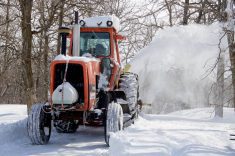I was recently at the dentist to deal with a cracked tooth. After the drilling and filling was complete, the freezing took a few hours to wear off, which left me in a state of uncertainty. Will I ever eat or speak properly again? Was everything fixed? Will it still hurt to bite on that side of my mouth?
The freezing subsided, and aside from minor discomfort, my teeth were back to normal the next day. Yet for a brief time, there was a chance it could go another way.
Many of the grain and oilseed markets are in a similar in-between state, with the fog of spring seeding and day-to-day weather forecasts keeping the focus away from several bigger-picture influences that may yet provide direction.
Read Also

Manitoba to boost rural medical responders
Manitoba bursary aims for more accessible emergency medical responder training, better rural emergency health care.
Biofuel
The U.S. Environmental Protection Agency is scheduled to release its final decision on biofuel blending mandates on June 14. Initial estimates on renewable diesel, released in late 2022, included no real increase, which weighed heavily on oilseed markets as the projected targets came in below current production.
Crushing and renewable diesel facilities questioned putting money into new developments, depending on whether or not the EPA will revise its target higher.
The marketplace has been banking aggressively on vegetable oil being part of a renewable fuel boom, and a revision higher would be welcomed by the industry. The EPA dampened those prospects, and if it doesn’t raise the mandate targets, there is a chance that soyoil will drop sharply, which would weigh on canola.
Drought
Traders are closely watching moisture conditions in the U.S. Midwest due to chances of a flash drought in parts of the corn belt. Topsoil levels were reportedly adequate in early June, but subsoils are short and the situation could easily worsen.
Ukraine/Russia
A regular feature in this space, the stability of the deal to move grain through the Black Sea remains a question. While an agreement was reached to keep grain moving into July, Russia was reportedly dragging its feet on inspections, and the likelihood of another extension to the deal is already in doubt. Hostilities between the two countries have also ramped up.
What that will mean for production and movement from the region remains to be seen, but peace talks or even a firmer agreement on grain movement would act much like a freezing needle at the dentist — numbing the pain of the situation.
















